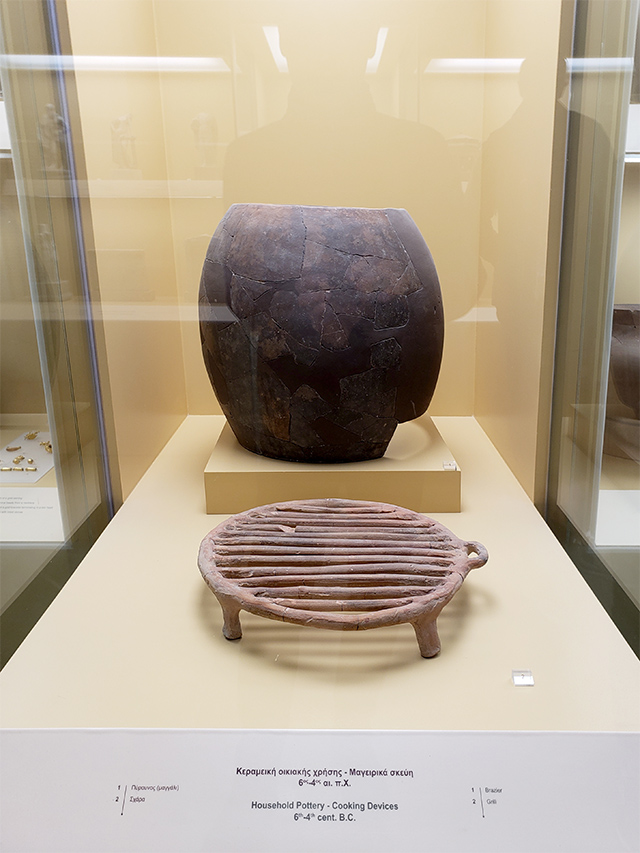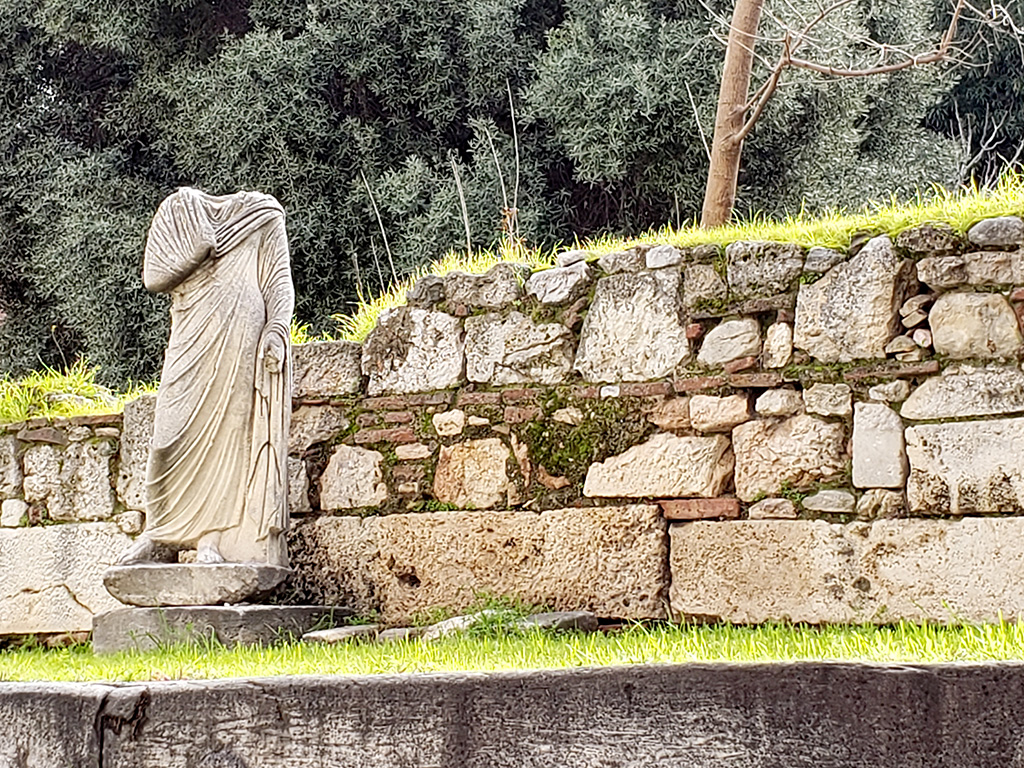
Northwest of the Acropolis in Athens is the Ancient Agora, a sprawling area where much of public life took place in ancient Athens. Buildings here were used for city administration, courts, and markets. This was the center of Athens where people gathered.

The Agora was constructed around 200 BC and then updated many times over the following centuries. By the 1800s it was covered in modern buildings.

There were some preliminary excavations of the Agora area in the late 1800s by Greek and German archaeologists. Later, additional historic foundations were found while workers were digging the trench for the trains that still pass through the edge of the Agora. A full and complete excavation, financed by American J. D. Rockefeller, began in 1941 and continues today. Over 400 modern homes were demolished early in these excavations.

Near the center of the Agora stands a headless statue of Emporer Hadrian, who ruled the Roman Empire from 117 AD to 138 AD. Athens at that time was part of the Empire, and Hadrian loved Greece and Greek culture. He spent time in Athens where he oversaw the building several monuments in the city and a restoration of the Parthenon.

The most eye-catching of the buildings in the Agora is the intimidating Temple of Hephaestus. Completed in 415 BC, it still stands more or less intact with minimal restorations. The temple honours Hephaestus, the “the patron god of metal working, craftsmanship, and fire”.





Part way through our visit the sun came out, and the scene was transformed.

In the southeast corner of the Agora is a Byzantine church known as the Agioi Apostoloi Athina (the Church of the Holy Apostles). This small church was one of several built atop the Agora, but it was the only one saved during the archaelogical excavations and demolitions. In 1954 it was extensively restored to its original state and modern additions were removed.


The Stoa of Attalos was the final building we visited in the Agora complex. This building served as the main marketplace in ancient Greece. It has been extensively restored and now houses the small but excellent Museum of the Ancient Agora to showcase some of the smaller and more fragile items found during excavations.




